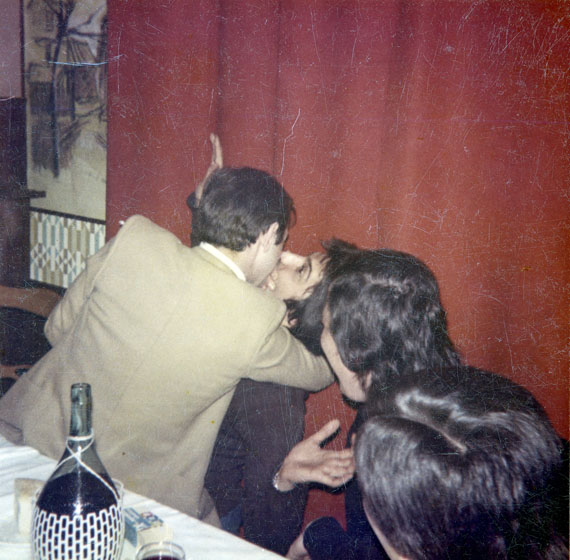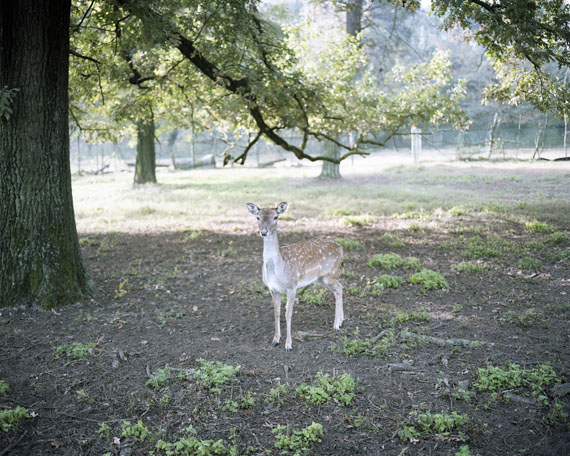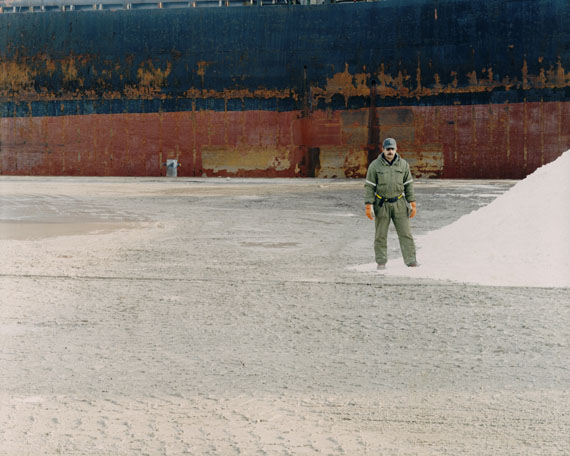
Il deserto rosso now
Photographic Reactions to Antonioni’s Classic Film
Fabrizio Albertini » Mariano Andreani » Daniele Ansidei » Jakob Argauer » Enrico Benvenuti » Joachim Brohm » Christoph Brückner » Luca Capuano » Daniel Augschöll/Anya Jasbar » Danny Degner/Vera König » Alessandra Dragoni » Johannes Ernst » Eva Dittrich/Katarína Dubovská » Andrea Galvani » João Grama » William Guerrieri » Guido Guidi » Gerry Johansson » Sophia Kesting » Philipp Kurzhals » Dana Lorenz » Allegra Martin » Mako Mizobuchi » Francesco Neri » Andrea Pertoldeo » Alexander Rosenkranz » Sabrina Ragucci/Giorgio Falco » Valentina Seidel » Anna Voswinckel » Jakob Wierzba » Xiaoxiao Xu »
Exhibition: 1 Sep 2017 – 28 Jan 2018
Thu 31 Aug 19:00
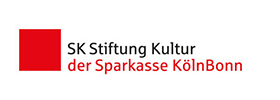
Die Photographische Sammlung / SK Stiftung Kultur, Köln
Im Mediapark 7
50670 Köln
+49 (0)221-88895300
photographie@sk-kultur.de
www.photographie-sk-kultur.de
Thu-Tue 14-19

"Il deserto rosso now"
Photographic Reactions to Antonioni’s Classic Film
A project by Die Photographische Sammlung/SK Stiftung Kultur in collaboration with the Academy of Visual Arts Leipzig, Linea di Confine, Rubiera, and Osservatorio Fotografico, Ravenna
Exhibition: 1 September, 2017 - 28 January, 2018 (in Room 1)
Opening: Thursday, 31 August, 7:00 p.m.
Works by more than thirty artists are being presented within the scope of this German-Italian project that examine the influential film “Il deserto rosso“ (1964) by Michelangelo Antonioni (1912-2007). Internationally, the director counts among the filmmakers whose influential bodies of work are highly admired by artists and photographers. "Il deserto rosso" (Red Desert), which was shot in the industrial region around Ravenna and whose innovative coloration is particularly striking, provides a wide variety of artistic stimuli, especially for a photographic examination.
The artists participating in the "Il deserto rosso now" project are associated with the Academy of Visual Arts Leipzig (the classes taught by Prof. Joachim Brohm and Anna Voswinckel) as well as with the photography initiatives Linea di Confine in Rubiera und Osservatorio Fotografico in Ravenna. In 2013, the first participants set out in search of traces in the northern Italian landscape around Ravenna, which continues to be characterized by industrial sites, for the purpose of visiting Antonioni's former locations, not only in a concrete respect but under atmospheric circumstances as well. The industrial backdrop in the film is the visual soundtrack, so to speak, accompanying the emotional, melancholy moods of the protagonists, in particular the young married woman Giuliana. Sounding out the psychogram of Giuliana and creating contemporary images that lend expression to her fears, her loneliness, and her sense of loss in the modern world and furthermore translate it into a universal language are threads that take effect in the photographic series and film contributions in the exhibition.
"Il deserto rosso" was the first film Antonioni made in which he discovered color as a multilayered aesthetic element. Thus the series currently on display repeatedly reflect on coloration as an artistic, corresponding, and symbolic visual material up to the point that it becomes absolute in the form of an image.
The fact that the narrative is subject to different representational conditions in photography and film is a media-reflexive issue that is pursued in the exhibition not only in spatial installations in the area of film and projection. By bringing in auditory and textual forms of expression, for example, photographic series also reflect on the various narrative possibilities and achieve independent results.
Several artists have chosen the photobook as a further medium of expression. The thematic focal points are wide-ranging and include topographic explorations of the industrial landscape and urban space, portraits, and representational detail studies.
Overall, the exhibition is of great documentary and poetic variety. It pursues the interaction between various media and once more demonstrates the relevance of existing materials and inspiration for the development of new tendencies in artistic photography.
The participating artists: Fabrizio Albertini, Mariano Andreani, Daniele Ansidei, Jakob Argauer, Daniel Augschöll/Anya Jasbar, Enrico Benvenuti, Joachim Brohm, Christoph Brückner, Luca Capuano, Danny Degner/Vera König, Eva Dittrich/Katarína Dubovská, Alessandra Dragoni, Johannes Ernst, Marcello Galvani, João Grama, William Guerrieri, Guido Guidi, Gerry Johansson, Sophia Kesting, Philipp Kurzhals, Dana Lorenz, Allegra Martin, Mako Mizobuchi, Francesco Neri, Andrea Pertoldeo, Sabrina Ragucci/Giorgio Falco, Alexander Rosenkranz, Valentina Seidel, Anna Voswinckel, Jakob Wierzba, Xiaoxiao Xu.
The group exhibition's first station was at Linea di Confine in Rubiera in October of last year. "Il deserto rosso now" is now being presented in Cologne in modified form. It will be accompanied by the catalogues "Die Straßen, die Fabriken, die Farben, der Himmel, die Menschen - In Referenz 'Il deserto rosso'" (German/English/Italian) (Fotohof, Salzburg) and "Red Desert Now! The legacy of Antonioni in contemporary Italian photography" (English/Italian) (Linea de Confine).�
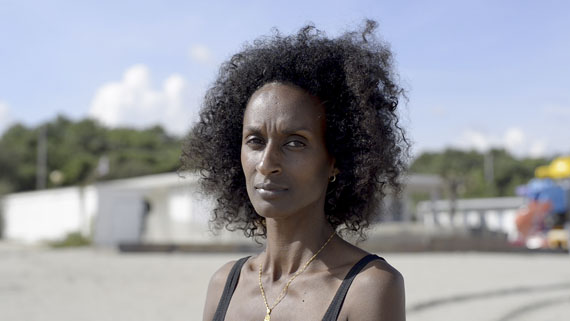
"Il deserto rosso now"
Photographische Reaktionen auf Antonionis Filmklassiker
Ausstellung: 1. September 2017 bis 28. Januar 2018 (in Raum 1)
Eröffnung: Donnerstag, 31. August, 19 Uhr
Ein Kooperationsprojekt der Photographischen Sammlung/SK Stiftung Kultur mit der Hochschule für Grafik und Buchkunst Leipzig, Linea di Confine, Rubiera und Osservatorio Fotografico, Ravenna
Mit diesem deutsch-italienischen Kooperationsprojekt werden Arbeiten von über 30 Künstlerinnen und Künstlern vorgestellt, die sich mit dem einflussreichen Film "Il deserto rosso" (1964) von Michelangelo Antonioni (1912-2007) auseinandersetzen. Der Regisseur zählt international zu den Filmschaffenden, deren maßgebliches Werk von Künstlern und Photographen hoch geschätzt wird. "Il deserto rosso" (Die rote Wüste), in der Industrieregion um Ravenna entstanden und beeindruckend insbesondere durch die innovative Farbgestaltung, bietet eine Vielzahl an künstlerischen Impulsen speziell für eine photographische Auseinandersetzung.
Die am Projekt "Il deserto rosso now" beteiligten Künstler sind der HGB in Leipzig (Klasse Prof. Joachim Brohm und Anna Voswinckel) und deren Umfeld angeschlossen sowie den photographischen Initiativen Linea di Confine in Rubiera und Osservatorio Fotografico in Ravenna. Im Jahr 2013 begaben sich die ersten Projektteilnehmer auf Spurensuche in die norditalienische Landschaft um Ravenna, die nach wie vor von Industriearealen geprägt ist. Eine Annäherung an die ehemaligen Drehorte Antonionis sollte vollzogen werden, nicht nur in konkreter Hinsicht, sondern auch unter atmosphärischen Vorzeichen. Die industrielle Kulisse im Film ist quasi der visuelle Soundtrack zu den emotionalen-schwermütigen Stimmungen der Protagonisten, insbesondere der jungen Ehefrau Giuliana. Das Psychogramm auszuloten und zeitgenössische Bilder zu schaffen, die Giulianas Ängste, ihre Einsamkeit und ihr Gefühl der Verlorenheit in der modernen Welt zu Ausdruck bringen und darüber hinaus ins Allgemeingültige überführen, sind Themenstränge, die in den photographischen Serien und filmischen Beiträgen der Ausstellung zum Tragen kommen.
"Il deserto rosso" war Antoninionis erster Film, in dem er die Farbe als ein vielschichtig ästhetisch einsetzbares Element entdeckte. So reflektieren die aktuell ausgestellten Serien immer wieder das Kolorit als gestalterische, korrespondierende und symbolische Bildmaterie bis dahin, dass sie in Form eines Bilds absolut gesetzt wird.
Dass das Narrativ in der Photographie und im Film anderen darstellerischen Bedingungen unterliegt, ist eine medienreflexive Fragestellung, der in der Ausstellung nicht nur räumliche Installationen im Bereich Film und Projektion nachgehen. Etwa unter Hinzuziehung von auditiven und textlichen Ausdrucksformen sind es ebenso photographische Serien, die die unterschiedlichen erzählerischen Möglichkeiten reflektieren und zu eigenständigen Ergebnissen kommen.
Als ein weiteres Ausdrucksmedium haben einige Künstler das Photobuch gewählt. Hier sind die Themenschwerpunkte breit gefächert und umfassen topographische Erkundungen der Industrielandschaft und des urbanen Raums, Porträts und gegenständliche Detailstudien.
In der Gesamtschau ist die Ausstellung von großer dokumentarischer und poetischer Vielfalt. Sie geht der Wechselwirkung unterschiedlicher Medien nach und verdeutlicht einmal mehr die Relevanz vorhandener Materialien und Inspiration für die Entwicklung neuer Tendenzen in der künstlerischen Photographie.
Es nehmen teil: Fabrizio Albertini, Mariano Andreani, Daniele Ansidei, Jakob Argauer, Daniel Augschöll/Anya Jasbar, Enrico Benvenuti, Joachim Brohm, Christoph Brückner, Luca Capuano, Danny Degner/Vera König, Eva Dittrich/Katarína Dubovská, Alessandra Dragoni, Johannes Ernst, Marcello Galvani, João Grama, William Guerrieri, Guido Guidi, Gerry Johansson, Sophia Kesting, Philipp Kurzhals, Dana Lorenz, Allegra Martin, Mako Mizobuchi, Francesco Neri, Andrea Pertoldeo, Sabrina Ragucci/Giorgio Falco, Alexander Rosenkranz, Valentina Seidel, Anna Voswinckel, Jakob Wierzba, Xiaoxiao Xu.
Im Oktober des vergangenen Jahres hatte die Gruppenausstellung in den Räumlichkeiten von Linea di Confine in Rubiera eine erste Station. In modifizierter Form wird "Il deserto rosso now" nun in Köln präsentiert. Dazu erscheinen die Katalogbücher "Die Straßen, die Fabriken, die Farben, der Himmel, die Menschen - In Referenz ‚Il deserto rosso'", Dtsch./Engl./Ital., (Fotohof, Salzburg) und "Red Desert Now!", Engl./Ital., (Linea di Confine).�
